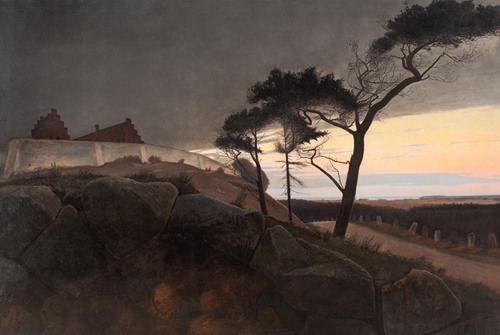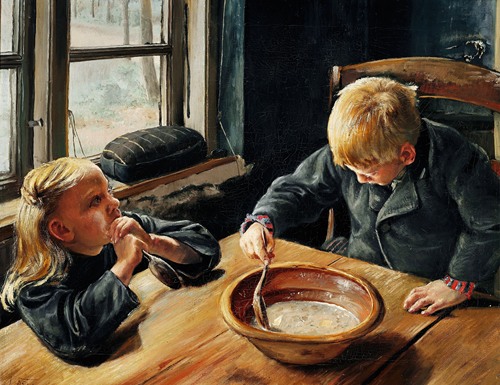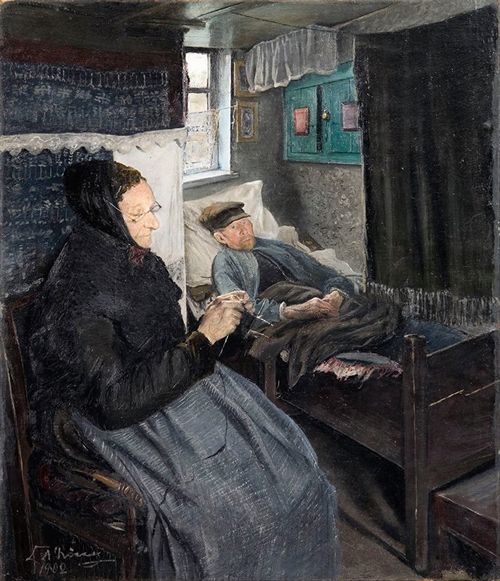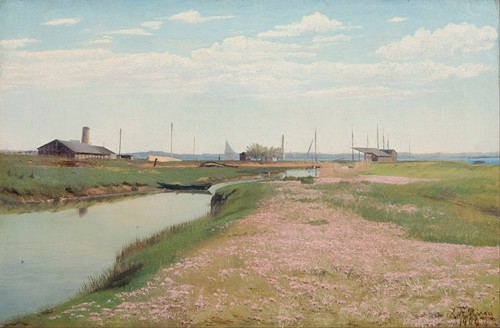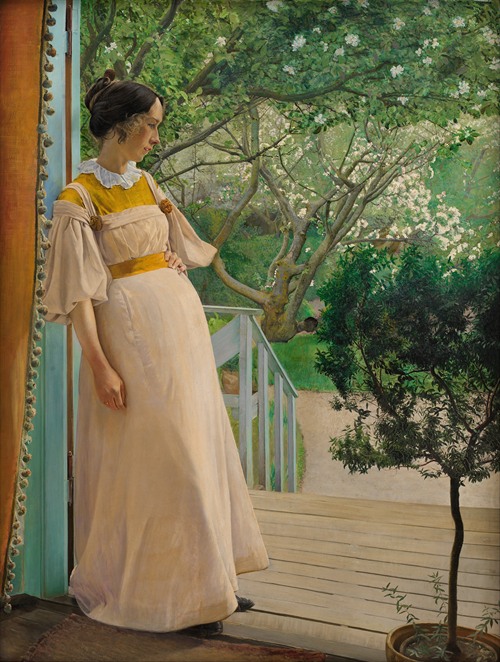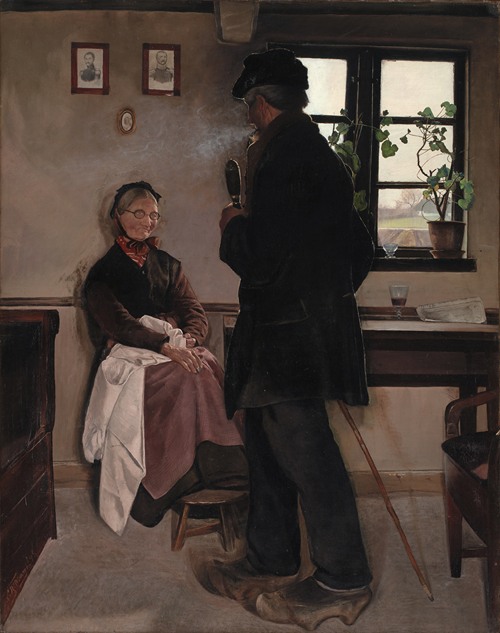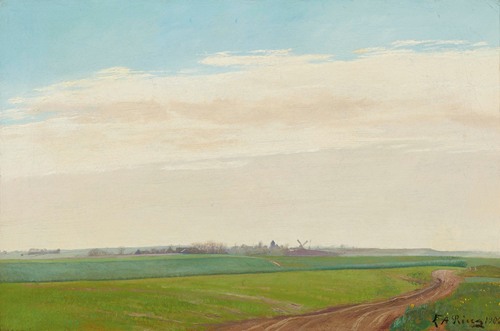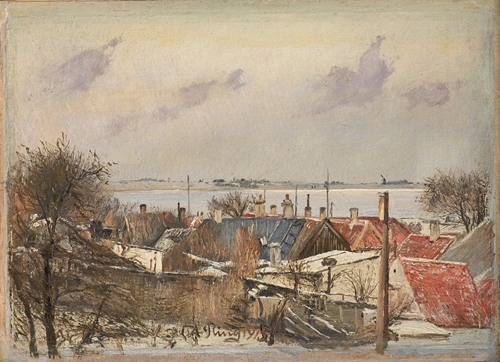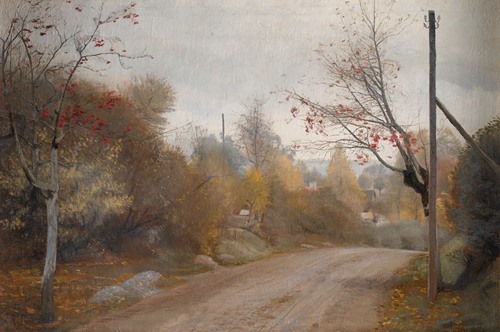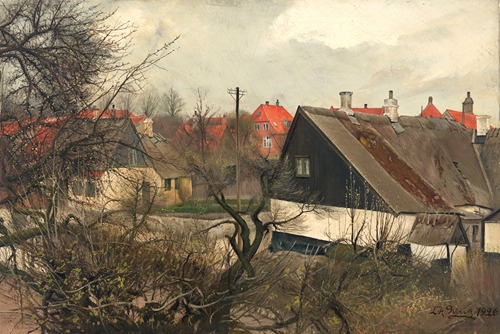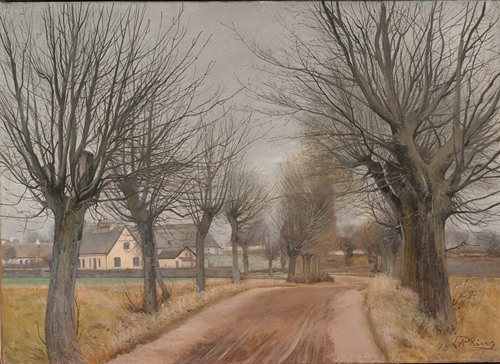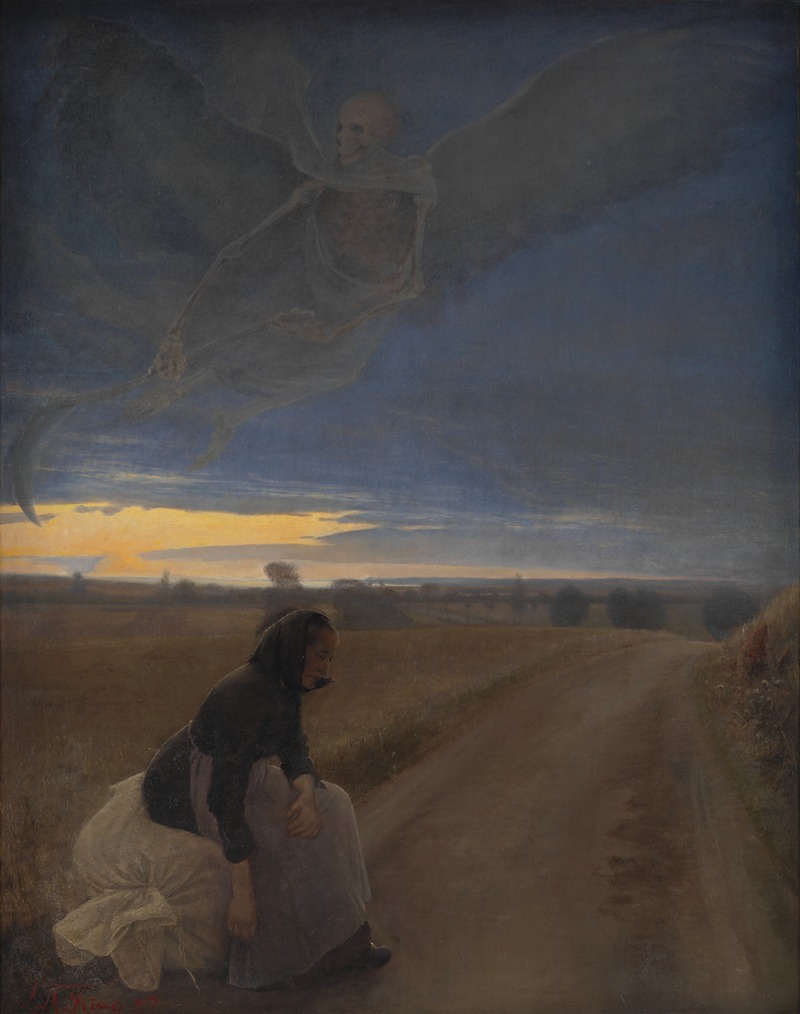
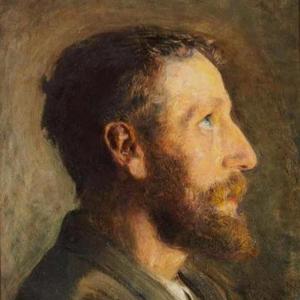
Laurits Andersen Ring was one of the foremost Danish painters of the turn of the 20th century, who pioneered both symbolism and social realism in Denmark. Considered one of the masterpieces of Danish culture, his painting Summer Day by Roskilde Fjord was included in the 2006 Danish Culture Canon.
Ring was born as Laurits Andersen a village named Ring in southern Zealand. Ring's parents were wheelmaker and carpenter Anders Olsen (1816–83) and farmer's daughter Johanne Andersdatter (1814–95). In 1869, he became a painter's apprentice because his older brother was to take over the father's workshop. In 1873, while working in Copenhagen Laurits decided to take classes in painting, and after two years of private studies he was accepted at the Danish Academy of Arts in 1875 and studied briefly with painter P. S. Krøyer. He was never content with the academy and disliked the strict training in classical disciplines.
In 1881, he and his friend, the painter Hans Andersen from the village of Brændekilde, decided to change their last names, taking the names of their native villages, in order to avoid confusion at their joint exhibition. Laurits became L. A. Ring, and his friend Hans became H. A. Brendekilde. Ring's first exhibition took place in 1882, but he did not acquire recognition until 1884, the year in which he finished The Railroad Guard (Banevogteren, 1884). At this time, Denmark was in political turmoil, as the Council President Estrup had bypassed democratic rule and governed through decrees. Ring was politically active in the "Rifle movement", a revolutionary group of students taking up arms training in preparation for a rebellion. Ring became increasingly interested in the difficulties of the poor and social justice for the lower classes.
Like Erik Henningsen and H.A. Brendekilde L.A. Ring painted social realistic portrayals of rural laborers, but not as noteworthy as Henningsen's En såret arbejder and Brendekilde's Udslidt. Ring does not attempt to cause pity or seek sympathy for the weak. Ring made a number of monumental portrayals of laborers, Harvest from 1885, Drænrørsgraverne also from 1885, Arbejdere ved en vandledning ved Søndersø from 1891, Teglværksarbejdere, Ladby Teglværk from 1892 and Sædemanden from 1910. They are all painted in the large format approximately 185 x 111,5 cm except from Drænrørsgraverne with the smaller format 142,5 x 111,5 cm.
The paintings all have a high horizontal line and the people do not tower into the sky in accordance with Ring's atheist attitude. Rather, they stay at the ground and have furthermore absorbed colour from the surroundings.
